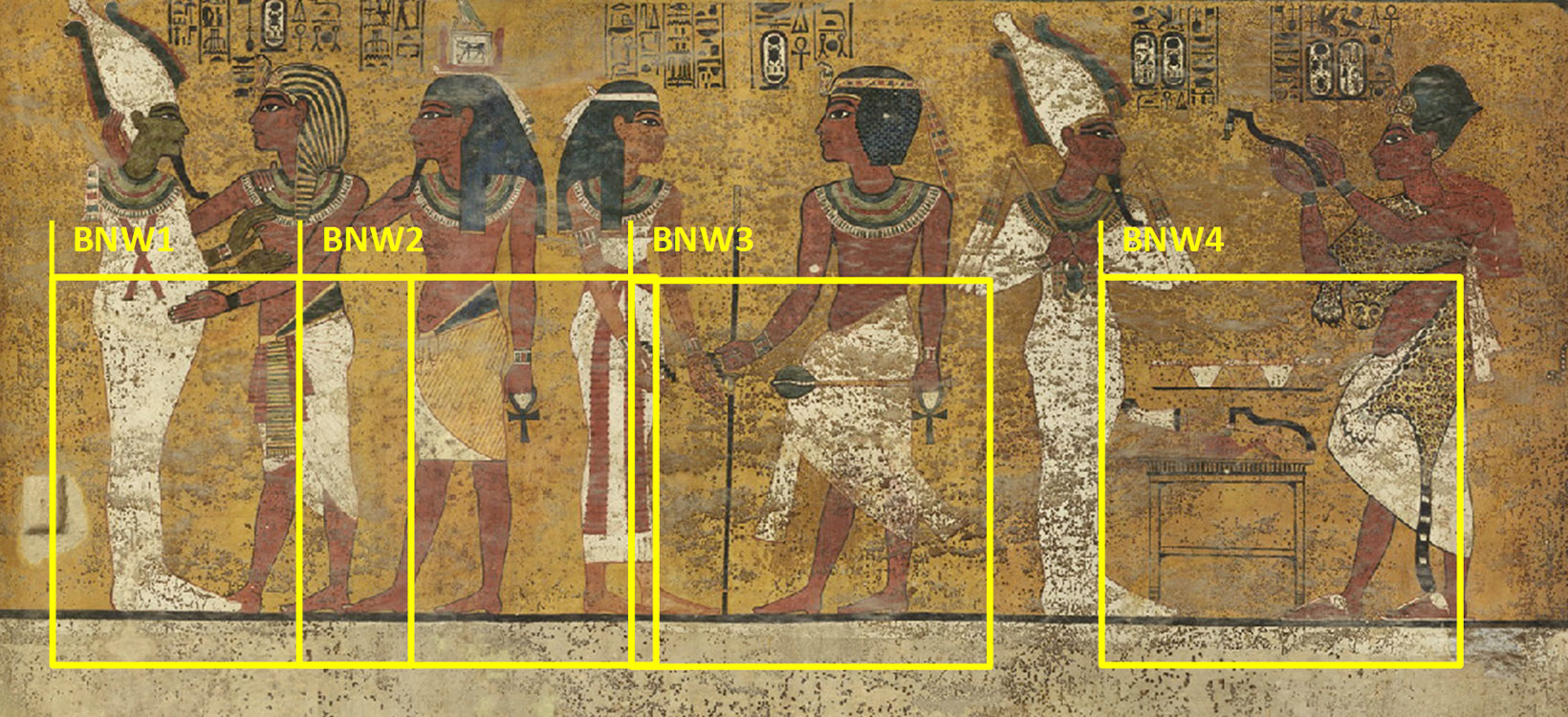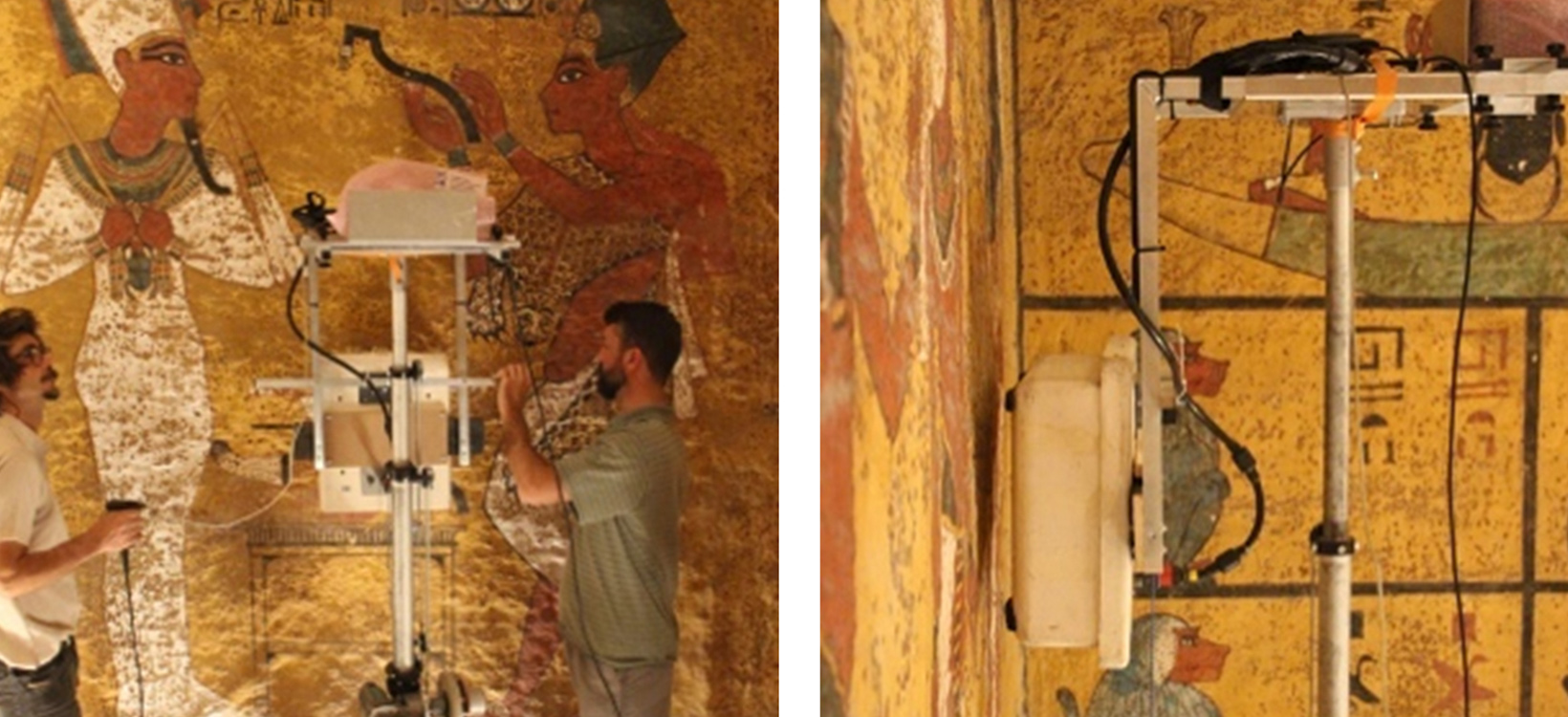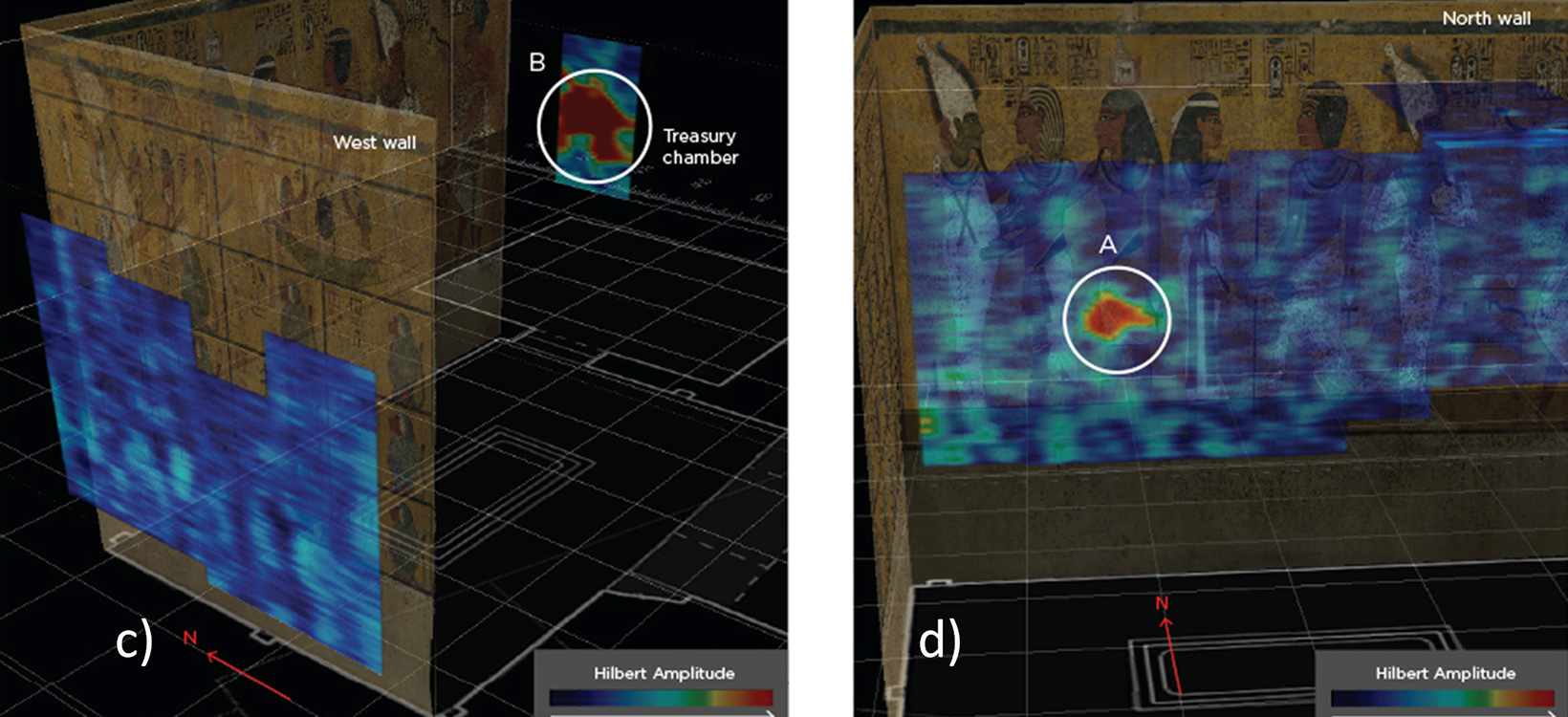Searching for hidden chambers adjacent to Tutankhamun’s tomb
Case study

Author: Lorenzo Bonelli
The original full article by Luigi Sambuelli, Cesare Comina, Gianluca Catanzariti, Filippo Barsuglia, Gianfranco Morelli, Francesco Porcelli was published on the March–April 2019 issue of Elsevier: https://www.sciencedirect.com/science/article/abs/pii/S1296207418308124
The tomb of the young pharaoh Tutankhamun is the most famous of all the royal tombs within the Valley of the Kings (VOK) in Luxor, Egypt. This tomb was discovered, with an almost intact funerary treasure by Howard Carter in 1922.
The existence of hidden chambers and corridors adjacent to Tutankhamun’s tomb (code name KV62) has been long debated. In 2015, it was suggested these chambers may host the yet undiscovered burial of Nefertiti. To test this hypothesis, two Ground Penetrating Radar (GPR) surveys conducted in 2015 and 2016 from inside KV62 were carried out but gave contradictory results. To solve these uncertainties and obtain a more confident and conclusive response, a third GPR survey was conducted in 2018 using IDS GeoRadar technology.
“This work was both a thrill and a challenge at the same time. The thrill is obvious – it felt like spying on the most famous Pharaoh’s golden burial palace, only some 3300 years later. In fact, our 21st-century state-of-the-art, multichannel and multi-frequency GPR instrumentation allowed an unprecedented scan through the chambers’ walls, in terms of resolution and clarity of the results,” said Gianluca Catanzariti, GPR specialist at 3DGeoimaging.
The discovery of the century

This image represents a sketch of the frame positions and the area covered by HF scans along the West and North walls.
GPR is commonly and successfully used in archaeological and forensic applications. Given the expected physical contrast between the bedrock in which the tomb is carved and the supposed sealed doorways as well as the possible presence of a wooden lintel above the doors, GPR is the most effective method to establish the presence of hidden chambers adjacent to KV62.
The first GPR survey indicated the presence of two distinct regions or cavities of significant empty space beyond the decorated north and west walls of the burial chamber. This finding was called ‘the discovery of the century’.
The Ministry of State of Antiquities (MoA) in Egypt commissioned a second GPR survey to reconfirm the results of the first KV62 GPR survey. This second survey was carried out by a National Geographic team using medium/high GPR antennae to scan into the walls of the tomb. The second KV62 GPR scan, however, could not confirm the initial findings. Therefore, the conclusions of the second KV62 GPR survey were inconsistent with those of the first GPR survey.
The fact the two previous KV62 radar scans proved inconclusive was a strong indication that the complexity of the task was somehow underestimated. Given this, the MoA called for a third, comprehensive geophysical survey of Tutankhamun’s tomb capable of providing conclusive evidence on the existence of hidden chambers and corridors adjacent to KV62.
To counter potential technical difficulties, the Italian team from the Polytechnic University of Turin, Geostudi Astier, 3D Geoimaging, and the University of Turin carried out the third survey using three GPR systems covering multiple frequency bands, from 150 MHz to 3 GHz.
Combining high- and low-frequency GPR surveys

Due to the requirement of scanning the walls without damaging their precious decorations, special equipment was designed and executed by the research team to move the antennae at a certain distance from the walls.
“The challenge resided in the peculiar instrumentation-target configuration – our GPR system had to 'slide' parallel to the vertical chamber's walls in order to scan the volumes beyond them, and this had never been tried before,” explained Catanzariti.
High-frequency (HF) surveys allow higher resolution for potential identification of shallow anomalies related to the doorway corners and to the presence of a backfilling structure made by incoherent material, including non-shaped stones blocks. HF scans were planned in order to investigate a stripe, about 1.5-metre-high, along the West and the North walls. All the GPR profiles were acquired with a GPR unit composed by an Aladdin 2GHz IDS GeoRadar antenna box and an IDS GeoRadar K2 control unit.
Low-frequency (LF) GPR surveys promote electromagnetic wave penetration and the potential identification of deeper voids. Acquisition of LF scans happened with an IDS GeoRadar RIS TR200 shielded antenna operating in transverse electric (TE) mode collecting data along the vertical direction, from bottom to top. The experts acquired intermediate frequency (IF) scans with a dual polarisation multi-channel IDS GeoRadar Stream C system.
Stream C allowed to simultaneously record, by a single swath, 23 radar profiles in transverse magnetic (TM) mode and 9 radar profiles in TE-mode.
In the end, the collected data obtained during a very large number of horizontal and vertical scans of the relevant KV62 walls summed up to about 2.7 kilometres of radargrams.
In the quest for finding hidden chambers

According to the processed data from HF acquisitions, the Italian research team found no evidence of a vertical plane (orthogonal to the scanned walls) that could be interpreted as the boundary between the rock and a blocking wall. Experts suggests the first KV62 GPR survey was likely misled in its conclusions by ‘ghost signals’, agreeing with the conclusions of the second GPR survey.
However, probably due to the limited time availability and spatial extension, the second KV62 GPR survey was unable to provide a convincing conclusive answer. With a high level of confidence, the research team concluded the theory concerning the existence of hidden chambers adjacent Tutankhamun’s tomb is not supported by GPR data.























